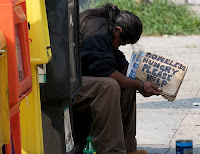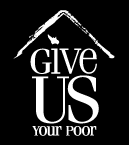 My colleagues and I at the Economic Roundtable in Los Angeles, along with the L.A. Co. Chief Executive Office, recently released a study titled, "Tools for Identifying High-Cost, High-Need Homeless Persons." This paper provides tools for identifying homeless individuals with acute needs, the highest public costs when homeless, and the greatest reduction in public costs when housed.
My colleagues and I at the Economic Roundtable in Los Angeles, along with the L.A. Co. Chief Executive Office, recently released a study titled, "Tools for Identifying High-Cost, High-Need Homeless Persons." This paper provides tools for identifying homeless individuals with acute needs, the highest public costs when homeless, and the greatest reduction in public costs when housed.We analyzed 10,193 homeless, destitute single adults in Los Angeles County – 1,007 of whom exited homelessness by entering supportive housing and were able to link records for these individuals across multiple public agencies, providing crucial information about their characteristics and the public costs for health, mental health, justice system, and welfare services they used. Supportive housing is permanent, affordable housing with on-site case management and additional on-site, or readily available, services such as health, mental health and substance abuse rehabilitation.
When we rank the overall population of homeless single adults by their public costs and break them into ten groups of equal size (deciles), we find that most have comparatively low public costs (an average of $710 per month). But the most expensive ten percent is an average of $8,083 per month, because of extensive use of hospitals and medical and mental health jails in that group. This ten percent of accounts for 56 percent of all public costs for homeless single adults.
When information about a person’s recent history is available, it is possible to combine multiple characteristics of a homeless adult to estimate his or her likelihood of being in the highest decile. No single characteristic defines the tenth cost decile, but by using combinations of key characteristics it is possible to identify these individuals with reasonable certainty. That is useful information for both the homeless person and the public entity working to help him or her.
There were some surprises that resulted from this study. I was most surprised by the range of variation in public costs for homeless individuals, with over half getting by with minimal subsistence-level help. Also surprising was the level and frequency of crises that engage the attention of hospitals and jails in the lives of the individuals with the highest public costs. Their lives are very precarious without housing and greatly stabilized with housing.
Our study also has seven major conclusions and recommended action steps. Please visit the Economic Roundtable website to download the full report as well as the tools we created.
Daniel Flaming is the President of the Economic Roundtable in Los Angeles.
Second photo by Ed Yourdon.


